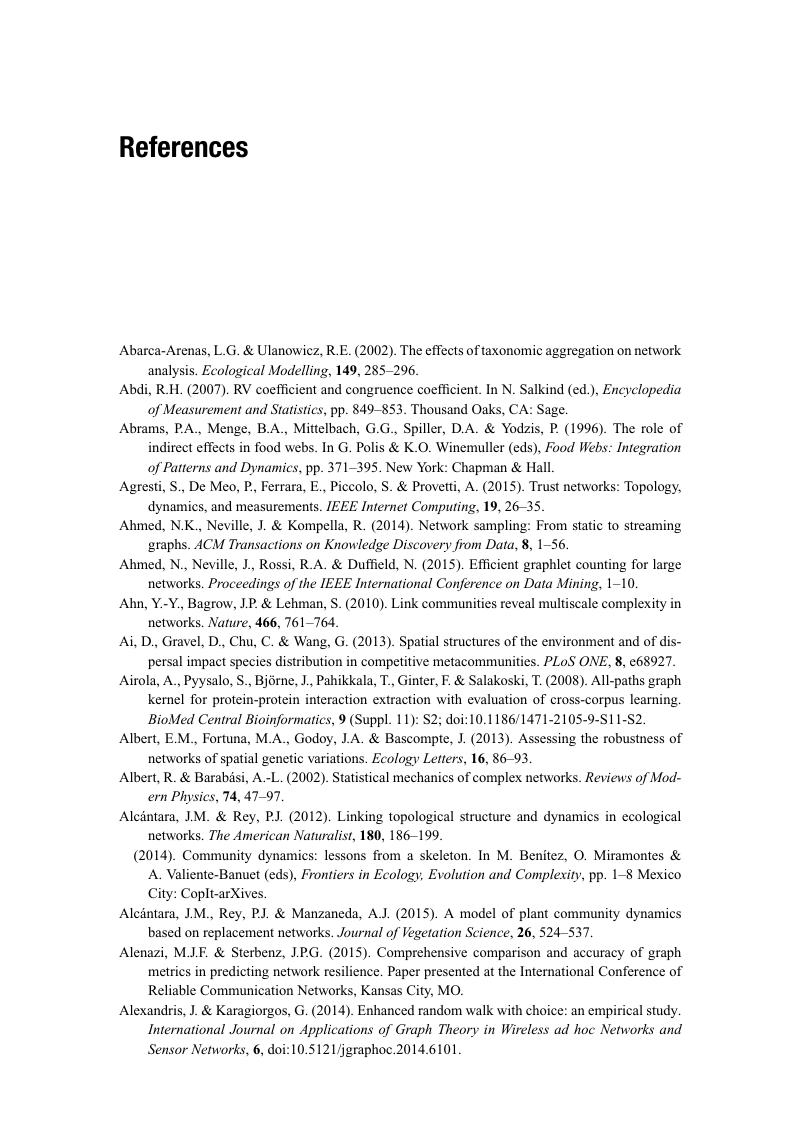Book contents
- Applying Graph Theory in Ecological Research
- Applying Graph Theory in Ecological Research
- Copyright page
- Dedication
- Contents
- Preface
- 1 Graphs as Structure in the Ecological Context
- 2 Shapes of Graphs: Trees to Triangles
- 3 Species Interaction Networks
- 4 Trophic Networks: Structure, Partitioning and Dynamics
- 5 Species Associations, Communities and Graphs of Social Structure
- 6 Competition: Hierarchies and Reversals
- 7 Mutualism, Parasitism and Bipartite Graphs
- 8 Temporal and Time-Only Graphs
- 9 Spatial Graphs
- 10 Spatio-temporal Graphs
- 11 Graph Structure and System Function: Graphlet Methods
- 12 Synthesis and Future Directions
- Glossary
- References
- Index
- Appendix
- References
References
Published online by Cambridge University Press: 31 October 2017
- Applying Graph Theory in Ecological Research
- Applying Graph Theory in Ecological Research
- Copyright page
- Dedication
- Contents
- Preface
- 1 Graphs as Structure in the Ecological Context
- 2 Shapes of Graphs: Trees to Triangles
- 3 Species Interaction Networks
- 4 Trophic Networks: Structure, Partitioning and Dynamics
- 5 Species Associations, Communities and Graphs of Social Structure
- 6 Competition: Hierarchies and Reversals
- 7 Mutualism, Parasitism and Bipartite Graphs
- 8 Temporal and Time-Only Graphs
- 9 Spatial Graphs
- 10 Spatio-temporal Graphs
- 11 Graph Structure and System Function: Graphlet Methods
- 12 Synthesis and Future Directions
- Glossary
- References
- Index
- Appendix
- References
Summary

- Type
- Chapter
- Information
- Applying Graph Theory in Ecological Research , pp. 297 - 327Publisher: Cambridge University PressPrint publication year: 2017



